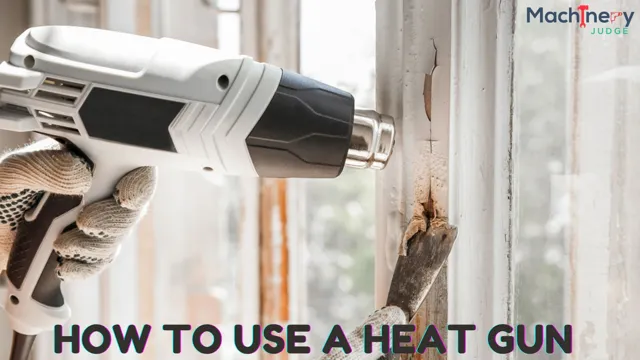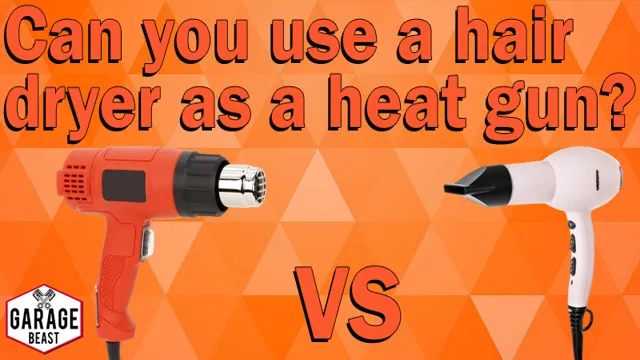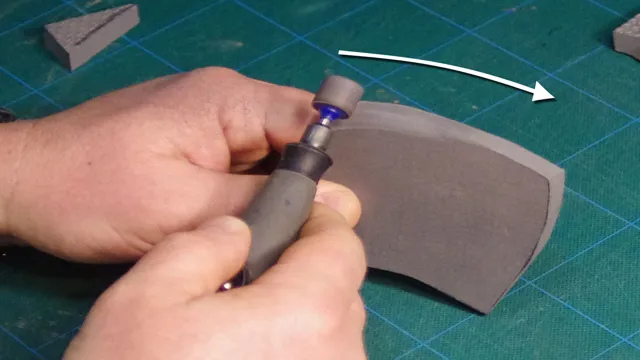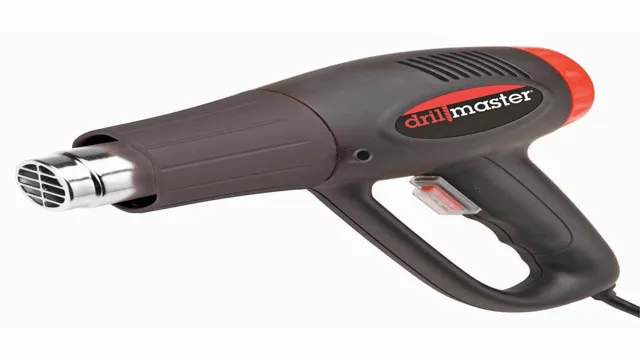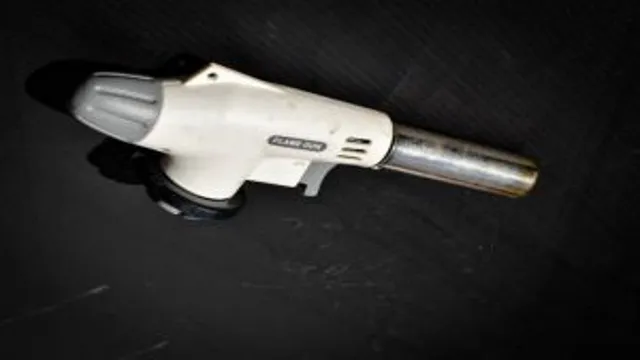
Have you been wondering if a heat gun is necessary when installing window tint? Well, the answer is not a straightforward one, as it largely depends on the type of tint you are using, the weather conditions, and your own personal preferences. While a heat gun can certainly make the process easier, it may not always be necessary. Window tinting can be a DIY project or done by a professional.
If you opt to do it yourself, a heat gun can come in handy, especially if you are using a high-quality tint that requires a certain amount of heat to properly adhere to the glass. Heat guns also allow for better control when working with the material, particularly when molding it to unusual shapes or curves. However, if you are using a lower quality tint, or if the weather is warm enough to soften the material on its own, a heat gun may not be necessary.
Moreover, if you are not accustomed to using a heat gun, it can be dangerous and result in the material being overheated and damaged. In a nutshell, while a heat gun can be helpful, it is not always necessary when installing window tint. It ultimately depends on the type of tint you are using, your level of comfort and expertise, and the weather conditions.
What is a Heat Gun?
When it comes to window tinting, using a heat gun can be incredibly helpful. But what exactly is a heat gun, and why might you need one for this task? Essentially, a heat gun is a handheld device that releases hot air to apply heat to a particular area. This can be useful for a variety of tasks, such as removing paint or wallpaper, thawing frozen pipes, or even crafting.
In the context of window tinting, a heat gun can help to soften the adhesive on the film, making it easier to apply smoothly to the window surface. While it’s possible to do this without a heat gun, using one can certainly make the process smoother and quicker. So, while you may not strictly need a heat gun for window tinting, it’s definitely worth considering if you want to make the job as easy and effective as possible.
Definition and Functionality
A heat gun is a versatile tool that generates hot air through an electric-powered device. It is commonly used for softening and removing paint, welding plastics, bending pipes, thawing frozen pipes, and drying wet surfaces. Heat guns come in various shapes and sizes and are equipped with multiple heating settings and airflow controls.
They produce temperatures ranging between 100 and 1,000 degrees Fahrenheit and can be operated with or without attachments and nozzles. A heat gun is similar to a hairdryer but produces much hotter air. It can be a perfect alternative to using an open flame, which can be hazardous, especially in confined spaces.
Heat guns are designed to be lightweight, portable, and easy to operate. They can be used by homeowners, DIYers, and professionals in various industries, including automotive, construction, and crafts. In summary, a heat gun is a handy tool that provides quick and precise heating for an array of applications.
They are easy to use, versatile, and produce intense heat that can be directed to specific areas, making them ideal for both small and extensive projects. So, whether you are a seasoned professional or a beginner, a heat gun can be a valuable addition to your toolkit.

Window Tinting: What You Need to Know
If you’re planning on doing window tinting, you might wonder if you need a heat gun to get the job done. The answer is that it depends on the type of tint you’re working with and what type of installation you’re doing. A heat gun can be useful for shrinking the tint to fit the curved shape of the window and for removing bubbles from the film.
If you’re using a pre-cut and adhesive film, you might not need a heat gun at all. However, if you’re working with a DIY film that comes in larger roles and requires more manipulation, using a heat gun can make a big difference in the final outcome. Regardless of whether you use a heat gun or not, make sure to take your time with the installation process and follow the manufacturer’s instructions carefully.
By doing so, you’ll end up with a professional-looking tint job that can help keep your car cooler and protect your privacy on the road.
Benefits of Window Tinting
Window tinting has various benefits that can enhance your driving experience while improving the appearance of your vehicle. One of the most significant advantages of window tinting is its ability to block harmful UV rays from the sun. It’s no secret that excessive sun exposure can cause skin damage, and it’s no different when it comes to driving.
Window tinting will protect your skin and eyes by reducing the amount of UV radiation that enters through your windows. Another advantage of window tinting is its ability to reduce glare, making driving in bright sunlight much more comfortable and safer. It also helps to regulate the temperature inside your car, ensuring a more comfortable ride during hot summer months.
Window tinting can also improve your privacy, providing a level of security that limits the ability of others to see inside your car. There are various window tinting options available to cater to everyone’s needs, varying in darkness, level of reflection, and durability. However, it’s important to note, different countries have specified laws about how much tinting is allowed on the cars’ windows.
Make sure to check your country’s laws before tinting your car windows. Opting for professional window tint installation services is more beneficial as they make sure the tint is installed correctly and works optimally. The cost of window tint installation varies depending on various factors, including the size of the windows, the type of vehicle, and the specific tint used.
In conclusion, window tinting has various benefits that make it worth considering for your vehicle. By blocking UV rays, reducing glare, regulating temperature, and improving privacy, you can enhance your driving experience and protect your car’s interior. Remember to check your country’s laws before proceeding with window tint installation and to opt for a professional installation job to ensure optimal results.
Types of Window Tinting Films
When it comes to window tinting, understanding the different types of films available can help you choose the perfect one for your needs. The most common types of films include dyed, metallic, and ceramic. Dyed films absorb heat and block UV rays, making them a popular choice for those who want to reduce glare and improve privacy.
Metallic films, on the other hand, are highly reflective and offer superior heat rejection. They are ideal for those who live in hot climates and want to reduce their energy bills. Finally, ceramic films are the latest innovation in window tinting and provide exceptional heat reduction and UV protection without interfering with electronic signals.
Whether you want to improve the look of your car or enhance your home’s energy efficiency, there is a type of window tinting film that is right for you. So, don’t wait any longer, contact a professional window tinting company today and start enjoying the many benefits of tinted windows.
Do You Need a Heat Gun for Window Tint?
When it comes to window tinting, a heat gun is definitely a useful tool to have on hand. Not only can it help you to smooth out any bubbles or wrinkles in the tint, but it can also help to activate the adhesive properly. The heat gun essentially works by applying heat to the tint film, which makes it more pliable and allows it to conform to the shape of the window.
This is particularly important for curved surfaces, as without a heat gun, the tint may not adhere properly and could end up peeling or bubbling over time. So, while a heat gun may not be an absolute necessity for window tinting, it is certainly a valuable tool to have in your arsenal and can make the process much easier and more effective.
Factors to Consider
When it comes to installing window tint, a heat gun can be a useful tool, but it is not always necessary. Factors to consider when deciding whether or not to use a heat gun include the type of tint being used, the climate and temperature of the area, and the size and complexity of the window. If you are using a high-quality tint that is designed to be easily installed without a heat gun, or if you are working in a warm climate, it may not be necessary to use a heat gun.
However, if you are working with a more complex window and need to shape the tint to fit the curves and edges, using a heat gun can be beneficial. Ultimately, the decision to use a heat gun should be based on your personal experience and comfort level, as well as the specific needs of your window tinting project.
Pros and Cons of Using a Heat Gun for Window Tinting
When it comes to window tinting, many people wonder if using a heat gun is necessary. While a heat gun can be a helpful tool for tinting windows, there are both pros and cons to consider. On the plus side, a heat gun can make the tinting process easier by helping to soften the window film, making it more pliable and easier to work with.
A heat gun can also be useful for removing old tint and adhesive that may still be stuck to the window. However, using a heat gun improperly can also lead to problems. For example, if the heat is too high or if the gun is held too close to the window for too long, it can cause the window itself to crack or even shatter.
Additionally, using a heat gun requires a certain level of skill and experience, so it’s not recommended for beginners. Ultimately, whether or not to use a heat gun for window tinting depends on your level of experience and comfort with the tool. If you’re a beginner, it’s generally best to avoid the heat gun until you’ve gained more experience and skill.
How to Apply Window Tint Without a Heat Gun
If you are wondering whether a heat gun is necessary for the window tint application, the answer is no! You don’t necessarily need a heat gun to install window tint. Though it speeds things up, it can be done without one. There are other tools that work just as well.
For instance, you can use a small squeegee or credit card to smooth out the film onto the window’s surface. Moreover, using a spray bottle filled with soapy water can help you realign the film if you make any mistakes. Furthermore, applying a small amount of heat and pressure from your hands warms up the film enough to activate the adhesive, allowing it to stick properly to the glass.
By working your way along the window, smoothing out any bubbles or wrinkles as you go, you can achieve a bubble-free, professional-looking finish without the use of a heat gun.
Step-by-Step Instructions
Window Tint Without Heat Gun Applying window tint without a heat gun may seem like a daunting task, but it’s actually quite simple if you follow these steps. First, clean the inside of the window thoroughly with ammonia-based cleaner and a microfiber cloth. Next, measure and cut the tint film so it’s slightly larger than the window.
Peel off the protective backing and spray the sticky side with a solution of soap and water. Carefully apply the film to the window, using a squeegee to smooth out any bubbles or wrinkles. Once the film is in place, use the squeegee to press out any excess water and air.
Finally, trim the edges of the film with a sharp blade and let it dry for at least one day before rolling down the window. Voila! You now have an expertly tinted window without the need of a heat gun.
Conclusion
In conclusion, asking if you need a heat gun for window tinting is like asking if you need a fork to eat spaghetti – technically you could use a spoon, but it’s going to make the process a lot more difficult. A heat gun is a crucial tool for proper window tint installation, aiding in the seamless application and ensuring longevity of the tint. Plus, it just makes the whole job a lot easier and more efficient.
So, if you’re considering taking on the DIY approach to tinting your windows, we highly recommend investing in a heat gun – your results and sanity will thank you!”
FAQs
What is a heat gun and how does it help with window tinting?
A heat gun is a tool that uses hot air to soften the adhesive on window tint, making it easier to remove and apply. It can also help smooth out any bubbles or wrinkles in the tint.
Can window tint be applied without a heat gun?
While it is possible to apply window tint without a heat gun, using one can greatly improve the results. A heat gun helps to ensure the tint adheres properly to the window and reduces the risk of bubbling or peeling.
Is it safe to use a heat gun for window tinting?
Yes, as long as the heat gun is used properly and with caution. It is important to not overheat the tint or the window, as this can cause damage. Always read and follow the manufacturer’s instructions for both the heat gun and the window tint.
What type of heat gun is best for window tinting?
A heat gun with adjustable temperature settings and a concentrated nozzle is ideal for window tinting. This allows for precise control over the amount of heat applied and reduces the risk of overheating.
Can a hair dryer be used as a substitute for a heat gun in window tinting?
While a hair dryer can provide some heat to soften the adhesive on window tint, it is not as effective as a heat gun. A hair dryer also does not have as much control over temperature and air flow, which can lead to uneven application or damage to the tint or window.
How long should a heat gun be used during window tinting?
The amount of time a heat gun is used during window tinting can vary depending on the type of tint and the temperature of the window. Generally, it is recommended to apply heat for a few seconds at a time, and then use a squeegee to smooth out the tint.
Can a heat gun be used to remove old window tint?
Yes, a heat gun can be used to soften the adhesive on old window tint, making it easier to remove. Again, it is important to use caution and not overheat the tint or the window.


